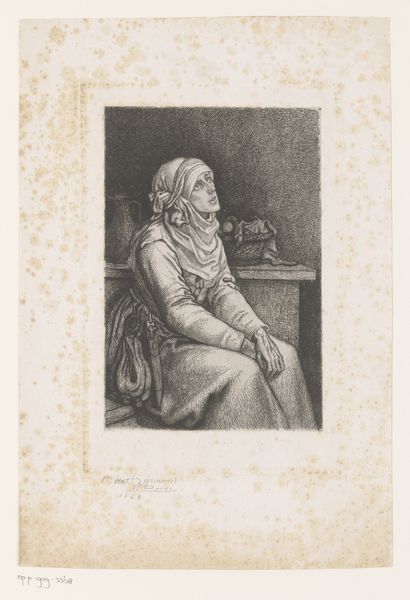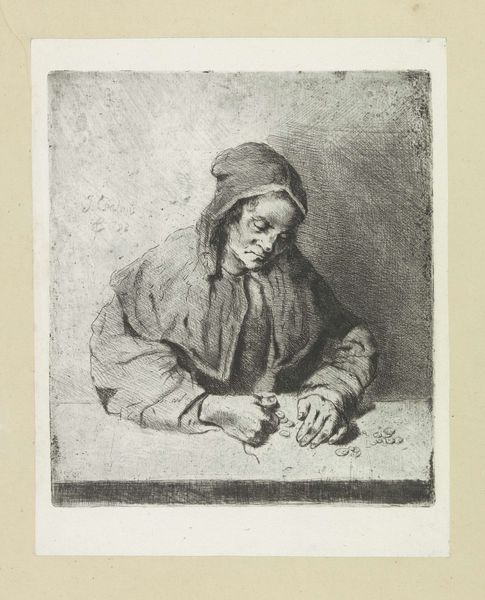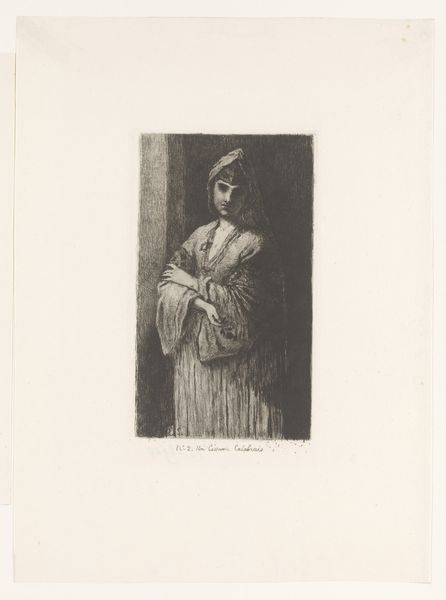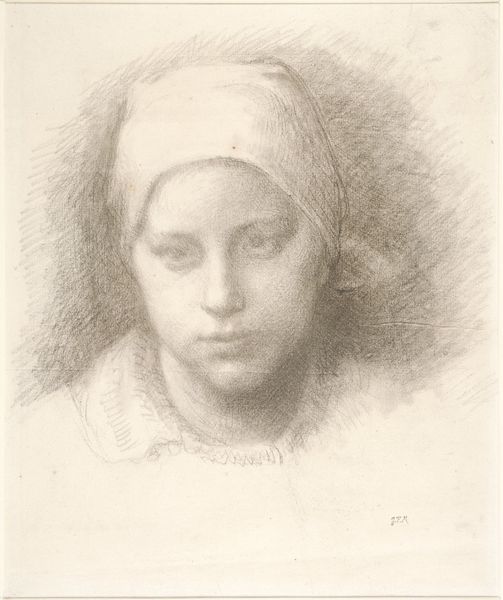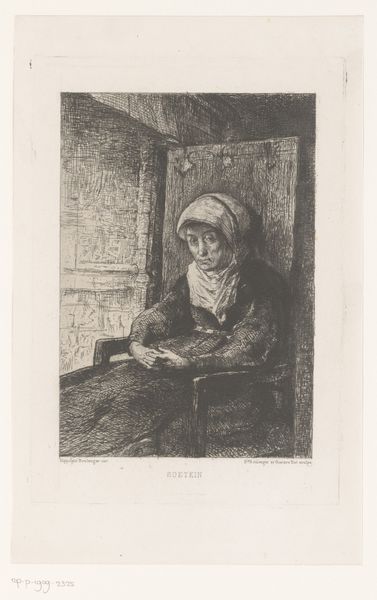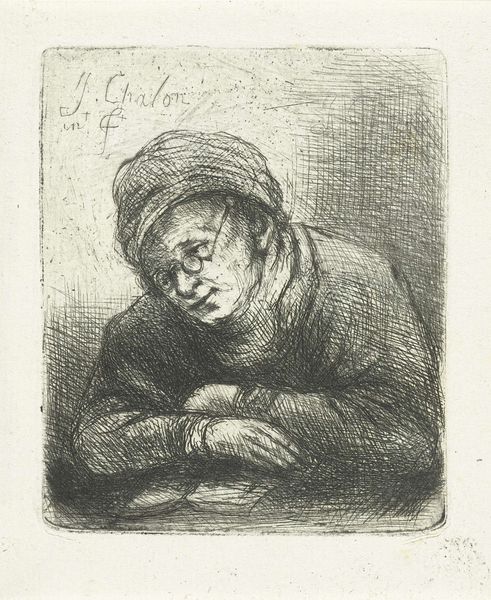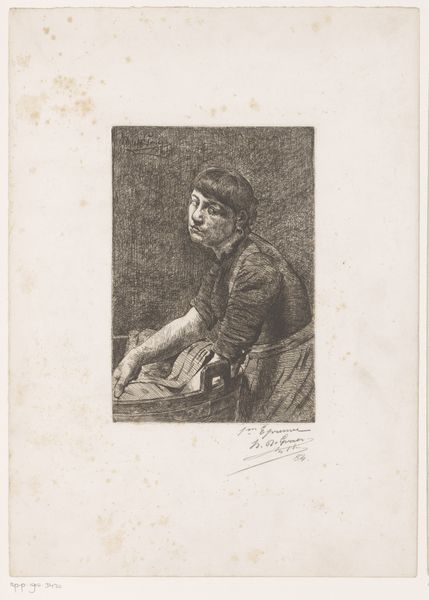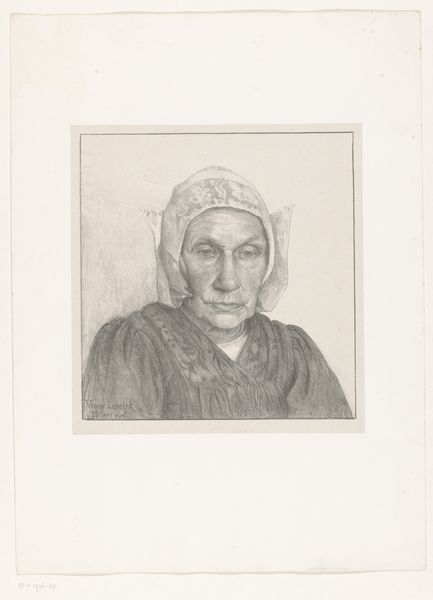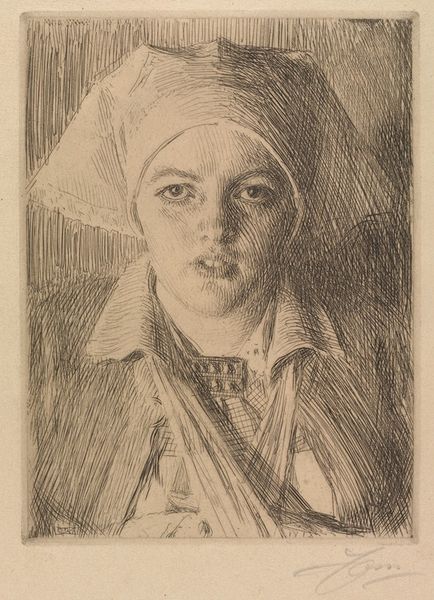
Meisje met hoofddoek, mogelijk in Marker klederdracht 1855 - 1914
0:00
0:00
bernardusjohannesblommers
Rijksmuseum
drawing, print, etching
#
portrait
#
drawing
# print
#
etching
#
charcoal drawing
#
figuration
#
pencil drawing
Dimensions: height 119 mm, width 102 mm
Copyright: Rijks Museum: Open Domain
Curator: Welcome! Before us, we have "Meisje met hoofddoek, mogelijk in Marker klederdracht"—or, "Girl with Headscarf, possibly in Marker costume"—an etching and print by Bernardus Johannes Blommers, created sometime between 1855 and 1914. It's currently held here at the Rijksmuseum. Editor: My first impression? Intimate. Moody, even. The girl's eyes pull you in, but there’s something somber about her posture and the heavy shading surrounding her. It feels less like a formal portrait and more like a captured moment. Curator: Indeed. Blommers was part of the Hague School, a movement known for its realistic depictions of everyday life, often tinged with a certain melancholy. The "Marker klederdracht" refers to traditional clothing from the island of Marken, north of Amsterdam, which retained its unique cultural identity well into the 20th century. These images were quite popular. Editor: Ah, Marken! That adds another layer. Knowing it's a specific cultural reference deepens the gaze. The way she's framed, leaning on her arms, almost like she's waiting, or observing the world…It invites narrative. Is she a witness, a participant, or simply a portrait? Curator: The art market had a fascination with ethnic subjects at the time, sometimes edging towards exoticization. But with an artist like Blommers, there was also the urge to legitimize cultural specificity by representing cultural groups accurately. Editor: I'm drawn to the contrast in texture, how smoothly her face is rendered compared to the heavier strokes defining the background. That concentration of detail on her face makes her appear more real. She almost looks like she's contemplating how she might leave that background to find herself within the context of time. Curator: Blommers employed the etching technique quite effectively to render details and varying tonalities. In addition to realism, though, works like this also demonstrate art's role in creating and perpetuating narratives about identity and cultural difference. Editor: Ultimately, this feels deeply personal, a young woman seen and preserved by art, but also a representation of time. A fleeting impression but a striking work of art to encounter today. Curator: Agreed. Blommers’ print offers not only an interesting visual of a young woman from Marken, but an entry point for thinking about broader questions about representation and Dutch cultural heritage.
Comments
No comments
Be the first to comment and join the conversation on the ultimate creative platform.
